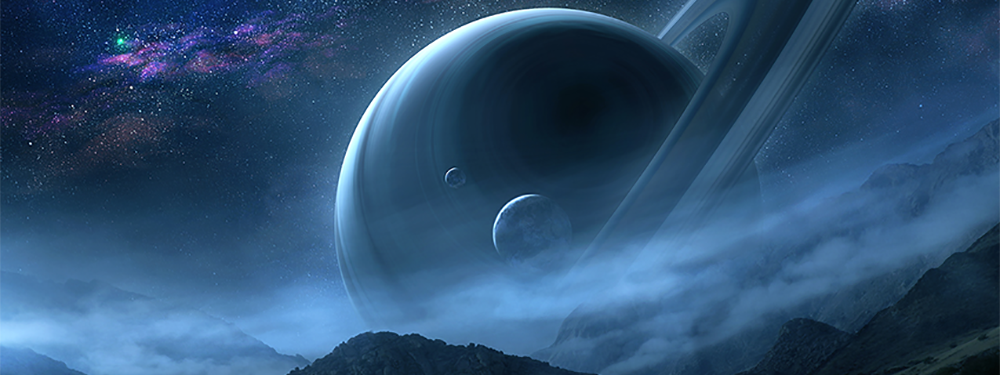
Overview
The residents of Aereth are knowledgeable about their solar system. Some scholars (i.e., scientists) have made long-range studies of the galaxy via elaborate telescopes. They have also recorded numerous events that have taken place or are taking place outside the Dracos galaxy such as supernovas, gamma ray bursts, etc. Do not equate simple technology with a simplistic view of the universe.
Other than Aereth, there is no life on other worlds in the Belinus solar system beyond some simple single-cell microbes. If the other moons or planets were ever inhabited by higher life forms, they are long extinct. The planets are listed based on their orbit around Bel.
The planet and star names are derived from the ancient Celtic gods and goddesses as referenced on the Celtic Gods and Goddesses website and the List of Celtic Deities on Wikipedia. Some of the gods and goddesses have been adapted to suit the realms of The Chronicles of Aereth roleplay. Others were created specifically for the roleplay.
*Our solar system was created by zeppelinmage.
The Galaxy: Sword of Light
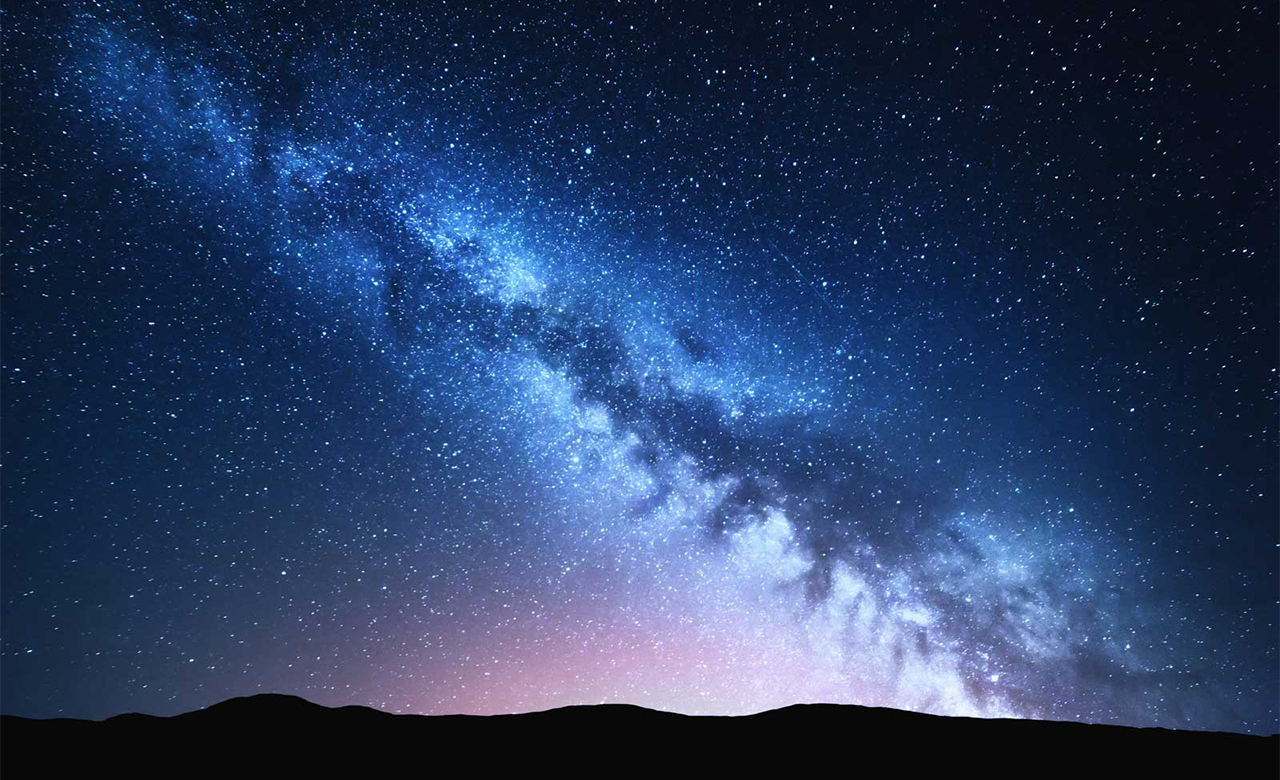
Aereth's solar system is in a stunning spiral galaxy commonly known as The Sword of Light. It symbolizes different things to the various peoples of Aereth. The Ddraig see it as the Sword of Light, hence its common name, that leads them on their next journey through the stars. The Llenan believe it is the visible representation of the ongoing battle between the forces of Light and the forces of the Shadow. The Sword of Light is clearly visible in the night sky as a dusky stripe of stars.
Variants: Cleddyf Goleuni (Old Tongue, pronounced: claythif galāni), Sword of Light (Common Tongue).
Aereth’s Solar System
Belinus (Bel) – The Sun
Solar Characteristics
- Color: Yellow white
- Luminosity: 4.01x1026 W
- Mass: 2.01646x1030 kg
- Radius: 786767 km
- Temperature: 5500 K
- Type: G2V
 Name and Mythology
Name and Mythology
Belinus (Bel): Drakerian fire and sun god, also God of Purification, science, fertility, crops and success. Symbolizes elements of fire and health. Variants: Belenus, Belinos, Beli Mawr.
Meaning: The Shining God
Aereth's sun is named for the ancient fire god, Belinus. The name is commonly shortened to Bel. This deity is often referred to as the Fair Shining One or the Shining God. Bel is important as a pastoral deity that was associated with the restorative and healing powers of the sun. The annual festival of Beltane or the “Fires of Bel” is held on the 1st day of the 5th Moon. Fires are lit to encourage the sun’s heat. Cattle were purified by herding them between the bonfires before being put out to summer pasture. The festival marks the beginning of summer. The ritualistic purpose of Beltane is to ask for Bel’s help in encouraging the crops to grow and protect the herds of cattle from disease.
Traditionally, Belenos is depicted riding the sun across the sky in a horse drawn chariot. Other representations include Belenus riding a horse throwing thunder-bolts while using his wheel as a shield. The wheel, a head with solar rays and halos is associated with Belenus.
Arianrhod
Orbital Stats
- Orbital Relationship: 1st planet, orbits closest to the sun.
- Semi-major Axis: 0.356 AU
- Inclination: 0.0°
- Eccentricity: 0.001
- Orbital period: 77 days
- Visibility: Naked Eye
Planetary Stats
- Mass: 9.746587x1023 kg
- Radius: 3500 km
- Rotational Period: 77 days
- Axial Tilt: 1°
- Type: Rocky planet
- Moons: None
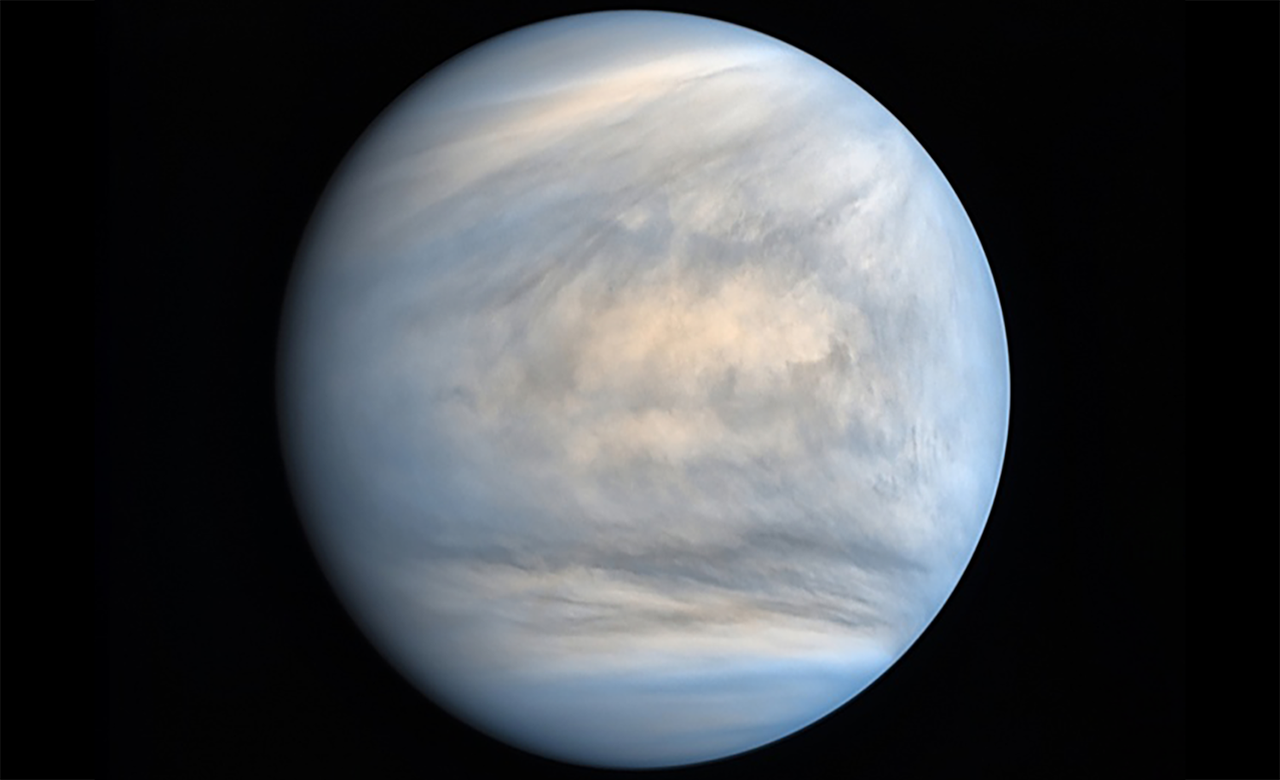 Description
Description
Arianrhod’s (p. arian-rod) orbit is closest to Bel. The planet is tidally locked to the sun and appears to follow it in the sky. It is only visible in the morning and evening when the sun's light isn't strong enough to wash it out. Arianrhod is also known as the morning and evening star. This planet does not have an atmosphere.
Name and Mythology
"The Silver Wheel", "High Fruitful Mother". Arianrhod is the sister of Gwydion and wife of Donn. Deity of the element of Air, reincarnation, full moons, time, karma, retribution. The palace of this sky Goddess was Caer Arianrhold (Northern Aurora). Keeper of the Silver Wheel of Stars and the Sword of Light, a symbol of time and karma. Her ship, Oar Wheel, carried dead warriors to Emania (Moon-land). Arianrhod rises in the evening to gather all of the spirits of those that died. In the morning, she parts the Veil and releases them.
Gwydion
Orbital Stats
- Orbital Relationship: 2nd planet from the sun.
- Semi-major Axis: 1.004 AU
- Inclination: 0.0º
- Eccentricity: 0.0025
- Orbital Period: 1.0 year
- Visibility: Naked eye
Planetary Stats
- Mass: 1.7545x1027 kg
- Radius: 68101 km
- Rotational Period: 13 hours
- Axial Tilt: 0°
- Type: Gas giant
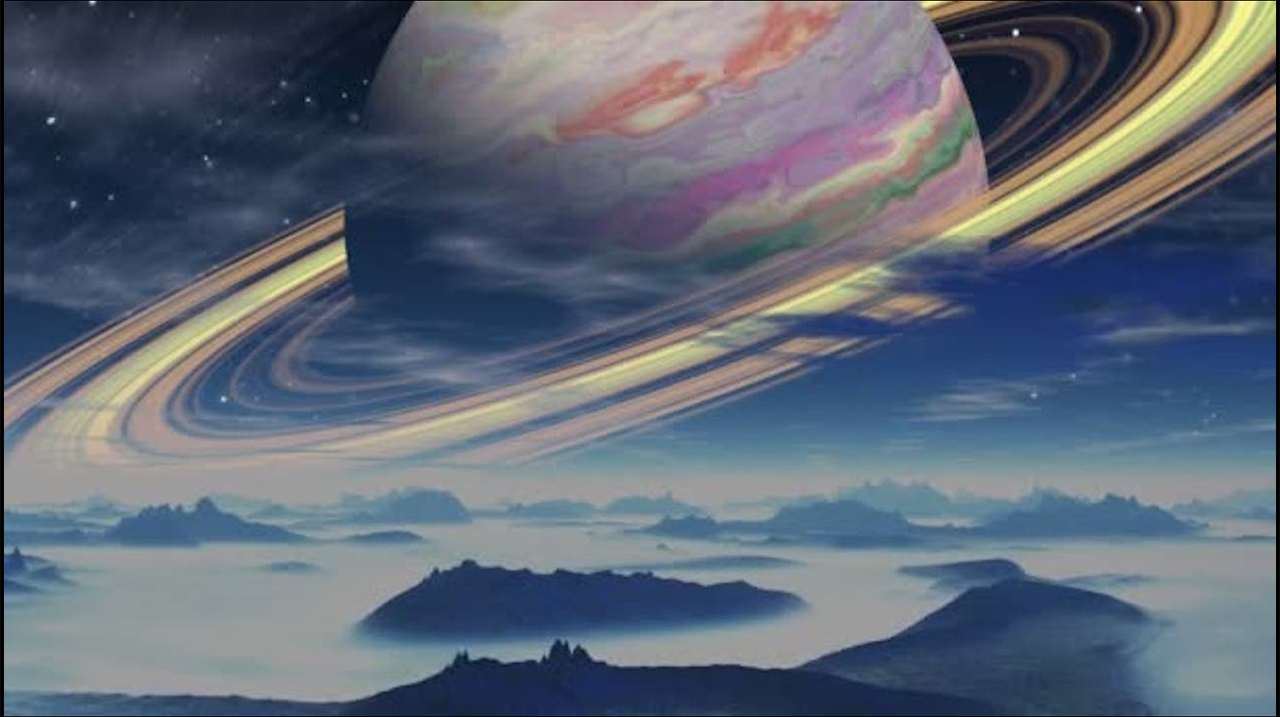 Description
Description
A large gas giant that appears to have a ring system in Bel’s habitable zone. The rings are energy fields and the source of Aereth’s magic. The rings are called Ley and appear as golden bands. If Aereth orbited alone at this distance, it would be a little cooler, with permanent significant ice coverage. With Gwydion’s radiation, Aereth the fluctuation of temperatures caused by orbit, tilt, and wobble are mitigated.
Name and Mythology
Warrior and magician god, God of Enchantment, illusion, magic. Father of Lleu and Dylan. A son of Donn, the sea Goddess, and brother to Govannon, Arianrhod, and Amaethon (God of Agriculture). Known as a great wizard and bard by the Llenan. He was many skilled, like Lugh. He was a shapeshifter whose symbol was a white horse.
Moons
Gwydion has many dozens of moons, most are too small to see with the naked eye. Four naked-eye larger ones (roughly the size of Herne) orbit closer to the planet.
Habitable Moons
Aereth is the only habitable moon orbiting Gwydion. In fact, Aereth is the only habitable world in the Bel solar system. It is the most distant of all of Gwydion’s moons.
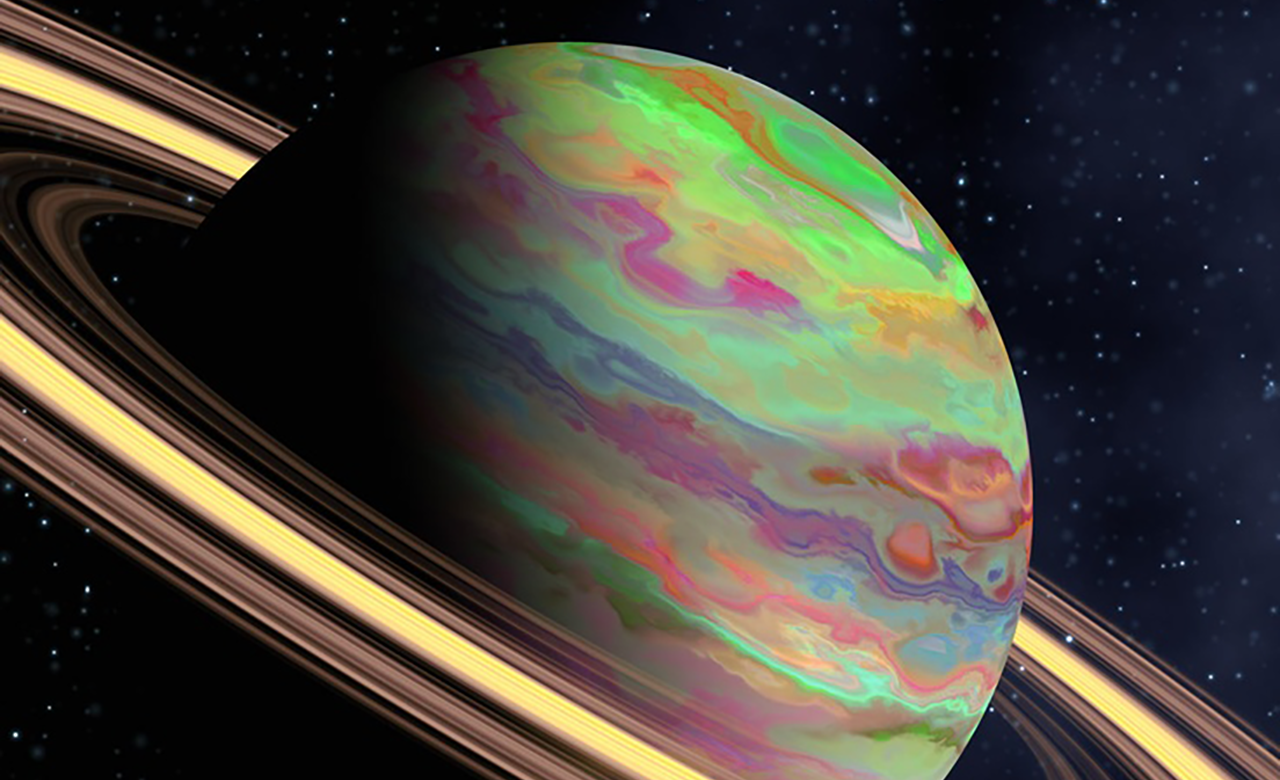 The Ley (Gwydion’s Rings)
The Ley (Gwydion’s Rings)
Gwydion is surrounded by stunningly beautiful rings. However, they are not the typical rocky debris that comprises the rings around other celestial bodies. Gwydion’s rings are made up of bands of arcane energy that ebbs and flows over a 4,000-year cycle. This ebb and flow make them appear to dim and brighten. The Ley, as the rings are known, are what gives Aereth and her inhabitants their arcane gifts. Three of the rings appear much larger and wider than the others.
The rings are divided between Light and Shadow. The Light Ley are simply called the Ley and appear as shimmering bands of golden energy. Occasionally, flashes of pure white energy are seen (looks like lightning bolts) arcing from one band to the next. These are readily visible to naked eye. The Dark Ley, also known as the Shadow Ley, are harder to see even when they are ascendant because they are much darker in color. When they can be seen, they appear like dull black or a dark angry purple with sullen sparks and flashes of purple energy.
The Ley gives the appearance of waxing and waning in 4,000-year cycles. The innermost ring and its darker companion are always, at least faintly, visible. The lighter, golden-colored rings are considered positive and the people of Aereth associate them with good magic and the Light. When the Ley are at their brightest, it is believed that the Light is at its most powerful. It is also believed that when the Ley have waned completely, and the darker bands are more visible, dark energies dominant Aereth. It is the time when Baara, the Lord of Shadows, the right hand of Tar’garath, and his Dark Host is strongest. During this time, the Shadows have greater access to the world of the living.
Turns
One turn is equal to four-thousand years and is divided into periods based on the Ley’s cycle of waxing and waning. The Ley are the bands of magical energy that encircle the gas giant planet that Aereth orbits. These are also called the Rings of Gwydion as that is how they would appear to observers. Put it down to geophysics, astrophysics, magic or a combination of the all three, Aereth's climatic seasons are influenced by the Ley.
- Waxing = 1,000 years: This is the period when the Ley are gradually brightening. The innermost ring (band of energy) is always faintly visible although at the Ley’s dimmest, it can only be seen at night.
- Seasons: Winters become milder and begin to shorten. The day / night cycle evens out.
- Argent (Brightest) = 1,000 years: The rings or Ley are said to be Argent when they are at their zenith. All three rings rings are bright and luminous. They can be seen during the day and at night as bands of shimmering blue, gold, and silver-white auroras.
- Seasons: There are four distinct seasons throughout most of the known world although, depending on a land's longitude and latitude, winters tend to be very mild. Days shorten and lengthen on a normal cycle (i.e. shorter days in the winter months, longer days in the summer months).
- Waning = 1,000 years: After a thousand years, the Rings begin to dim. The darker bands of energy that flows between the Ley can be seen flickering, sort of like sullen sparks of lightning.
- Seasons: The world's tilt is starting to shift slowly and inexorably. Winters are getting longer, summers are getting shorter. Daylight hours are getting shorter and the sun seems less bright.
- Obscura (Dimmest) = 1,000 years: The period that is called the Obscura is when the rings are at their dimmest. Only flickers can be seen here and there. The innermost ring is barely visible at night.
- Seasons: By the time the Ley are at their dimmest, the world has tipped into an almost perpetual twilight (similar to when the sun barely rises in the arctic regions). The daylight hours noticeably dimmer than during other Turns. Summer never comes and the majority of Aereth is blanketed by ice and snow. These Ages of Ice are brutal and Aereth's people are threatened with extinction. Yet, they manage to prevail and survive to the next Age of Summer.
Gwydion’s Eclipses (The Shroud)
Dominating the sky is the massive omnipresence of Gwydion. The gas planet is large enough that two outstretched fingers don't cover it. Gwydion’s movement is determined by both the daily rotation of Aereth and Aereth's monthly orbit around the gas giant. Gwydion is so large that every month it completely covers Bel in eclipse. The cycle isn't precisely 30 days, but shifted by about 10 hours each day. Midwinter, when the eclipse is directly overhead at noon, is when the marking of a new year begins.
The orbit of Gwydion is 365 days (one Aereth year). Each eclipse denotes the end of a month (30 days, 10 hours).
These eclipses are known as The Shroud and there is a worldwide belief that it is a day of evil portent. The majority of Aereth’s inhabitants believe that the Veil between the worlds is thinnest during the Shroud. This allows the Shadowborn and Shadow-Touched easier access to the world of the Lightborn. Many people schedule their work and lives so that they can remain indoors during The Shroud.
- Midwinter Moon (New Year): Beginning/end of year, peak eclipse around Noon. (visible)
- End of 1st Moon (January): Peak occurs around 10pm. (not visible)
- End of 2nd Month (February): Peak occurs around 8am. (visible)
- End of 3rd Moon (March): Peak occurs around 6pm. (beginning visible)
- End of 4th Moon (April): Peak occurs around 4am. (end visible)
- End of 5th Moon (May): Peak occurs around 2pm. (visible)
- End of 6th Moon (June): Peak occurs around midnight. (not visible)
- End of 7th Moon (July): Peak occurs around 10am. (visible)
- End of 8th Moon (August): Peak occurs around 8pm. (beginning visible)
- End of 9th Moon (September): Peak occurs around 6am. (end visible)
- End of 10th Moon (October): Peak occurs around 4pm. (visible)
- End of 11th Moon (November): Peak occurs around 2am. (not visible)
Aereth (habitable moon)
Orbital Stats
- Orbital Relationship: Largest and most distant of Gwydion’s moons.
- Semi-major Axis: 2008765 km
- Inclination: ±1.2° at ring zenith, 0.0° at ring equinox.
- Eccentricity: 0.003
- Orbital Period: 19 days 3 hours
- Visibility: N/A (home world)
Planetary Stats
- Mass: 5.594x1024 kg
- Radius: 6354 km
- Rotational Period: 24 hours
- Axial Tilt: 23°
- Type: Rocky planet
- Moons: 1 sub moon (Aine)
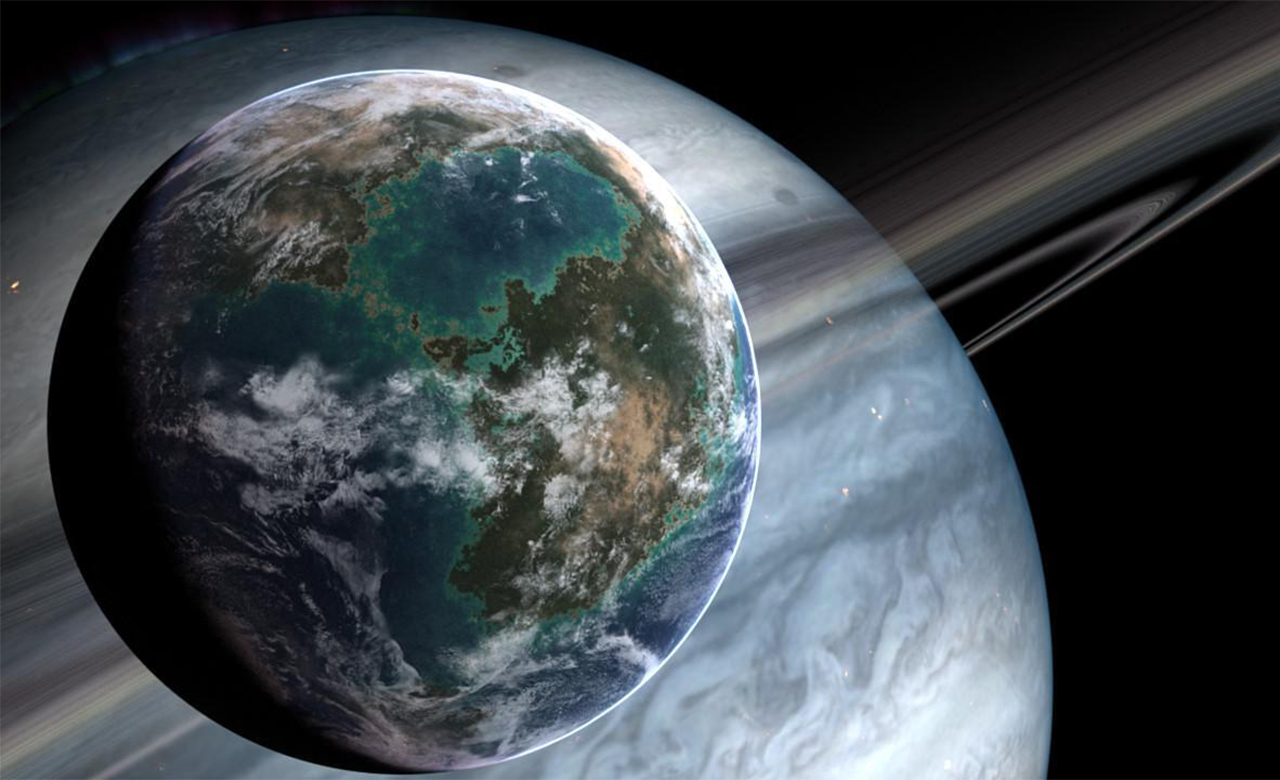 Description
Description
Aereth’s axial tilt controls its seasons, more so than Gwydion’s orbital eccentricity or Aereth’s orbit around Gwydion. Put it down to geophysics, astrophysics, magic or a combination of the all three, Aereth's climatic seasons are influenced by the Ley.
Name and Mythology
Aereth is the Ddraig’s legendary First Dragon. She laid the first Great Egg from which all Dragonkind hatched. Although the Ddraig are respectful of the various deities belonging to the biped cultures, they only have the one deity. Aereth is the primal Mother Goddess. Aereth also spawned the Anemoi (The Four Winds) which are not gods or goddesses, but more like angels who intercede between the living world and the world beyond the Veil.
Aine
Orbital Stats
- Orbital Relationship: Sub moon orbiting Aereth.
- Semi-major Axis: 451124.47 km
- Inclination: 0.025°
- Eccentricity: 0.05
- Orbital Period: 36 days 1 hour 30 minutes
- Visibility: Naked eye
Planetary Stats
- Mass: 1.067653x1023 kg
- Radius: 1968.4 km
- Rotational Period: 36 days 1 hour 30 minutes
- Axial Tilt: 23°
- Type: Rocky planetoid
- Angular Size in the Sky: 0.5 degrees, approximately the same size as the moon from Earth.
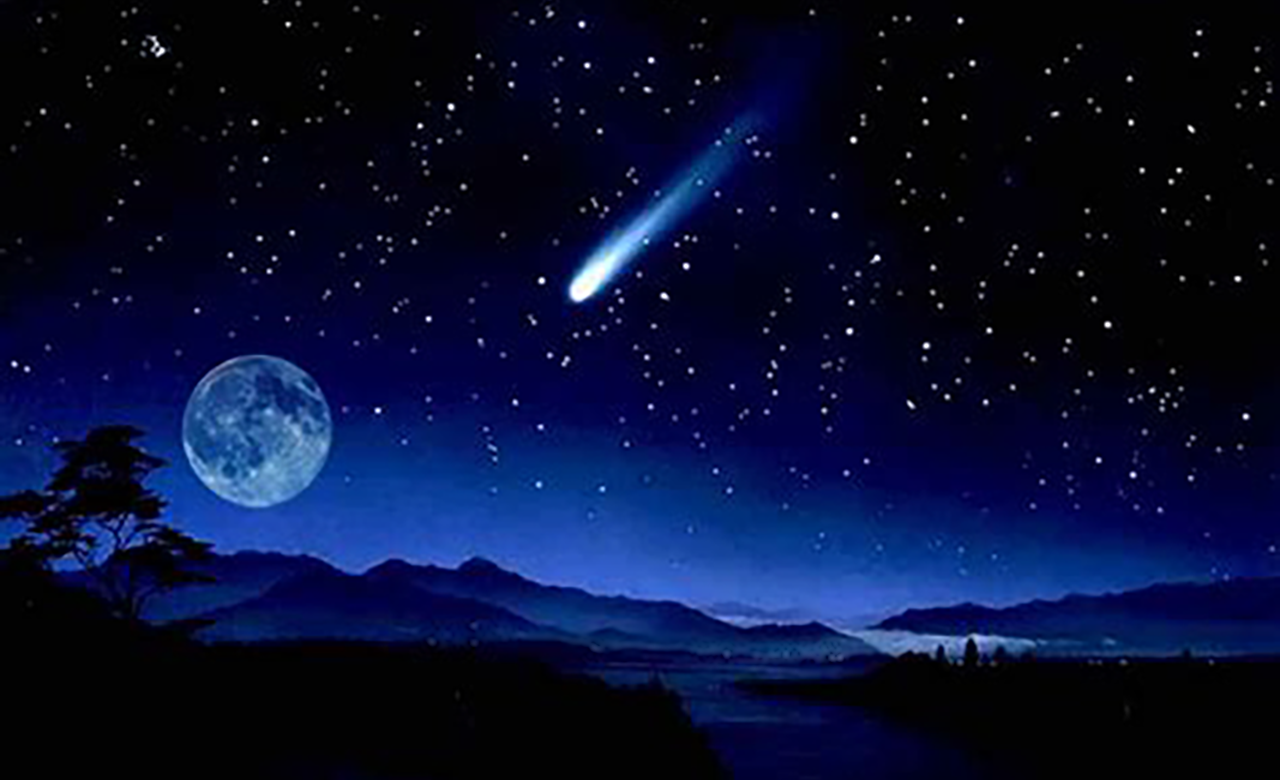 Description
Description
Aine is a small, rocky planetoid that once orbited Gwydion in a highly elliptical orbit that intersected Aereth’s. Several thousand years ago it was captured by Aereth. In another several thousand years it will escape again due to Gwydion’s gravitational influence. For the time being, it is in a semi-stable orbit.
Appearance
Because of Aine’s rock and mineral composition, it glows a faint, ghostly blue-white. The darker patches are mostly impact craters. However, some of the more reflective ones are obsidian that oozed out during a volcanically active period in Aine’s distant past.
Name and Mythology
Llenan Goddess of love and fertility, later known as the fairy queen. Goddess related to the moon, crops, and farms or cattle. Aine is revered among herbalists and healers and is said to be responsible for the body's life force. There is a stone called Cathair Aine, belonging to her and if anyone sat on the stone, they would be in danger of losing their wits, sit three times and they would lose them forever (moon madness). Aine was very revengeful, and it was not a safe thing to offend her.
Airemidd
Orbital Stats
- Orbital Relationship: 3rd planet from the sun.
- Semi-major Axis: 3.66 AU
- Inclination: 1.2°
- Eccentricity: 0.075
- Orbital Period: 7 years, 217 days, 3 hours
- Visibility: Naked eye
Planetary Stats
- Mass: 1.4667x1025 kg
- Radius: 8350 km
- Rotational Period: 35 hours
- Axial Tilt: 16°
- Type: Rocky, icy super-Earth
- Moons: 3, too small to see
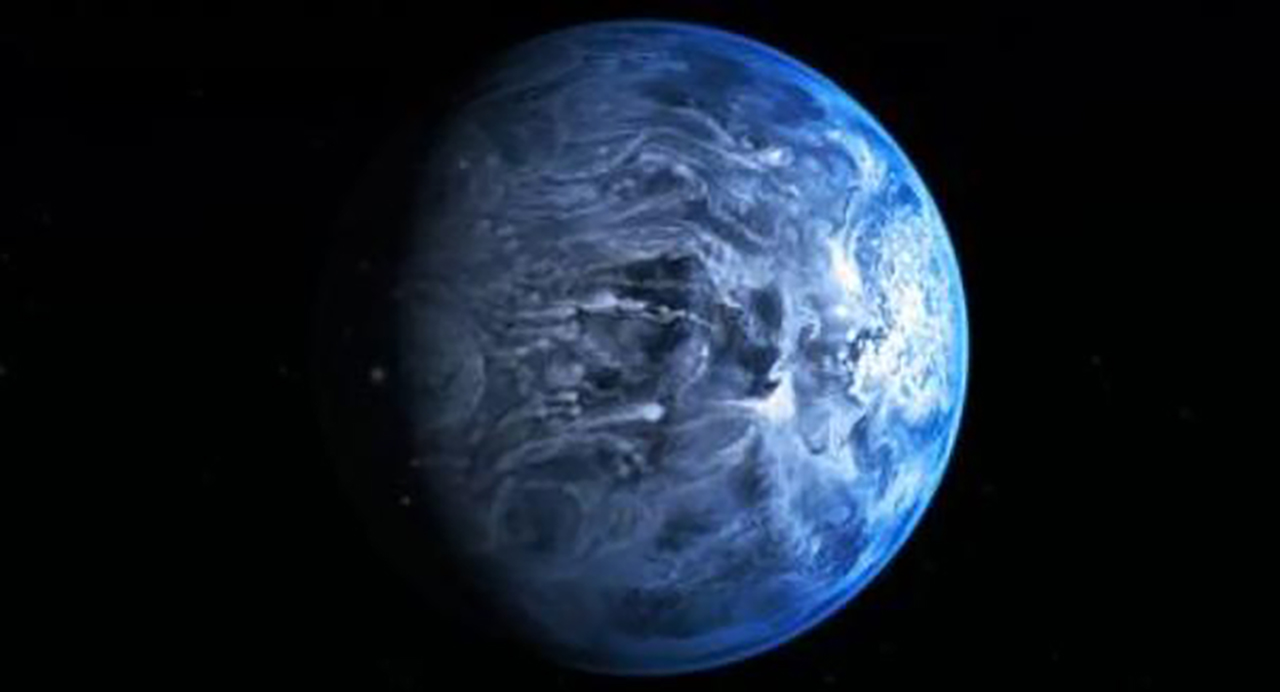 Description
Description
Airmid is a super-earth about 25% larger than Aereth and is the 3rd planet from Belinus, the sun. It orbits outside the habitable zone. The planet has a thick atmosphere and an ice-covered surface. From Aereth, it appears bluish-white and can be seen with the naked eye at night when it appears as a blue-white star.
Name and Mythology
In Sídhe and Drakeran mythology, the goddess Airemidd (originally Airmid) was one of the Tuatha Dé Danann. With her father, Dian Cecht, and brother Miach, she healed those injured in the Second Battle of Magh Tuiredh, a mythical clash between the Tuatha Dé Danann and Baara's Dark Host.
After her jealous father slew her brother, Miach, Airemidd wept over her brother's grave. Watered by her tears, all the healing herbs of the world sprang from the earth over Miach's body. Airemidd collected and organized them all, spreading them on her cloak. Once again, their father lashed out, and scattered the herbs. For this reason, no living human knows all the secrets of herbalism. Only Airemidd remembers.
Along with Dian Cecht, Ochtriullach, and Miach, Airemidd was one of the enchanters whose incantation sung over the well of Sláine was able to resurrect the dead.
In modern times, the healers' guild on Aereth is known as the Guild of Airemidd. Since the planet is bluish-white, like Aereth's moon, Ma'at, healers at the highest level in the Guild are known as Moonsingers.
Niskai
Orbital Stats
- Orbital Relationship: 4th planet from the sun
- Semi-major Axis: 7.023 AU
- Inclination: 1.22°
- Eccentricity: 0.008
- Orbital Period: 18 years, 167 days, 14 hours
- Visibility: Naked eye
Planetary Stats
- Mass: 5.6946x1026 kg
- Radius: 51445 km
- Rotational Period: 8.5 hours
- Axial Tilt: 5ºType: Gas giant
- Moons: Dozens. Only 3 are large enough to be seen from Aereth with a telescope.
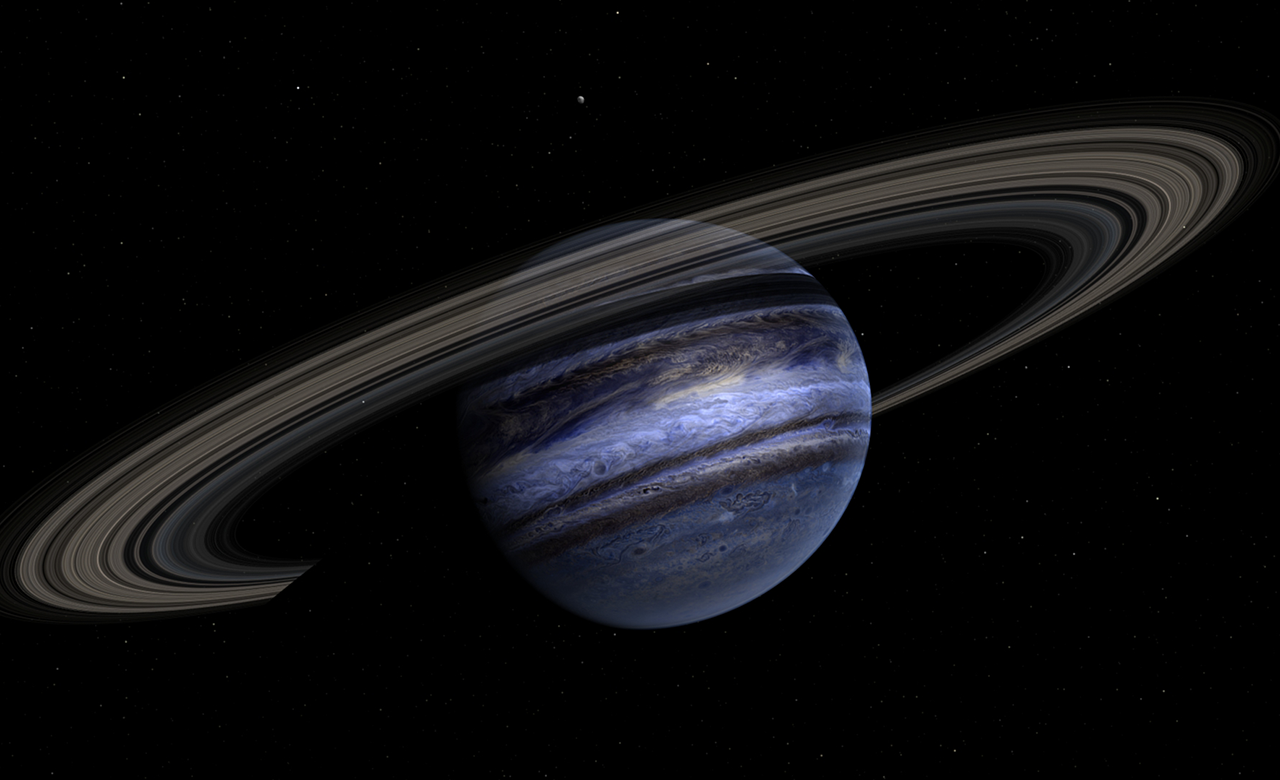 Description
Description
Niskai is another gas giant but smaller than Gwydion. The ring system sparkles like sunlight on water which is why this world was named for the water elementals. To the naked eye, it looks slightly bluish.
Name and Mythology
The Niskai are water sprites and guardians of forest springs, rivers, lakes, wells and other freshwater resources. Each body of water has their own sprite. Traditionally, most cultures on Aereth offer thanks to the Niskai when they use the world's freshwater, usually by spilling three drops from their cup or canteen. To not give thanks to the Niskai risks angering them which can affect fishing and even cause freshwater resources to go bad.
Asteroid Belt
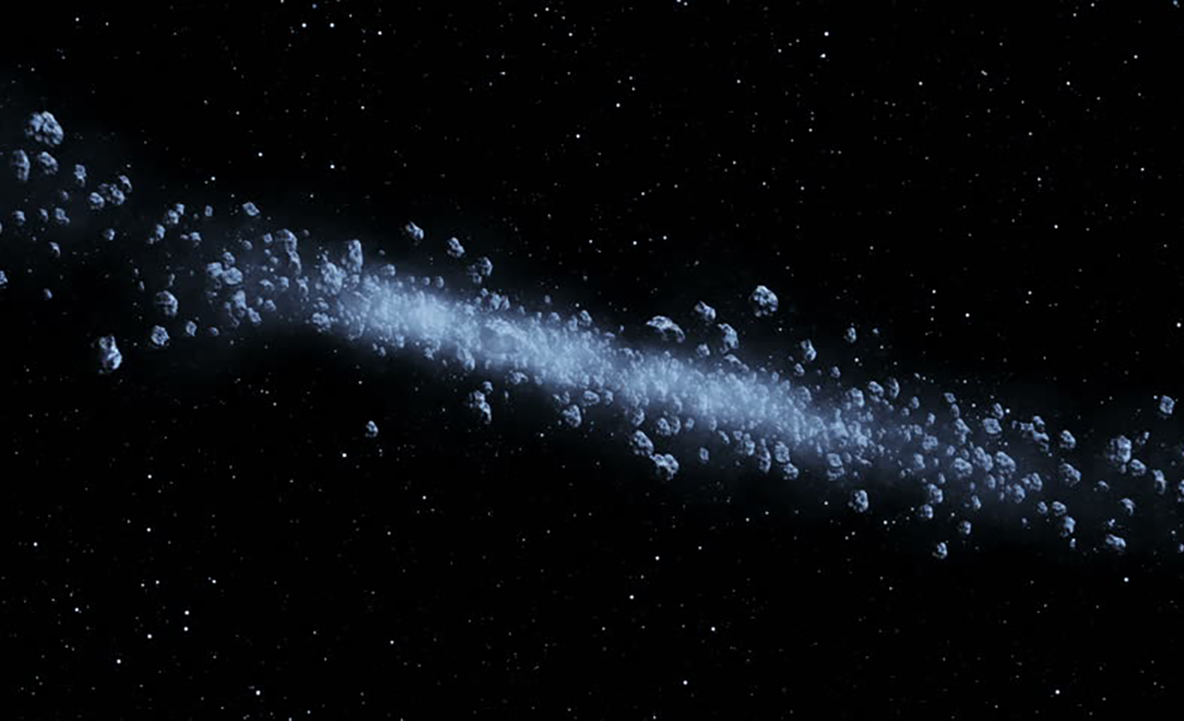 Stats
Stats
- Orbital distance: 11-13 AU
- Collective Mass: 3x1021 kg
Visibility
Largest bodies can be seen by simple telescopes. Smaller bodies need more advanced optics.
Description
A diffuse ring of rock and planetesimals. The vast majority of which are very small. About a half dozen are large enough to be seen in telescopes, with the largest with a radius near 400 km.
Lugh
Orbital Stats
- Orbital Relationship: 5th planet from the sun
- Semi-major Axis: 18.008 AU
- Inclination: 0.78°
- Eccentricity: 0.005
- Orbital Period: 75 years, 347 days, 19 hours
- Visibility: Naked eye, but indistinguishable from nearby stars. Extensive observation can discern its slow movement.
Planetary Stats
- Mass: 5.3387x1025 kg
- Radius: 19192 km
- Rotational Period: 15 hours
- Axial Tilt: 12°
- Type: Ice giant
- Moons: 14 (all invisible to the naked eye).
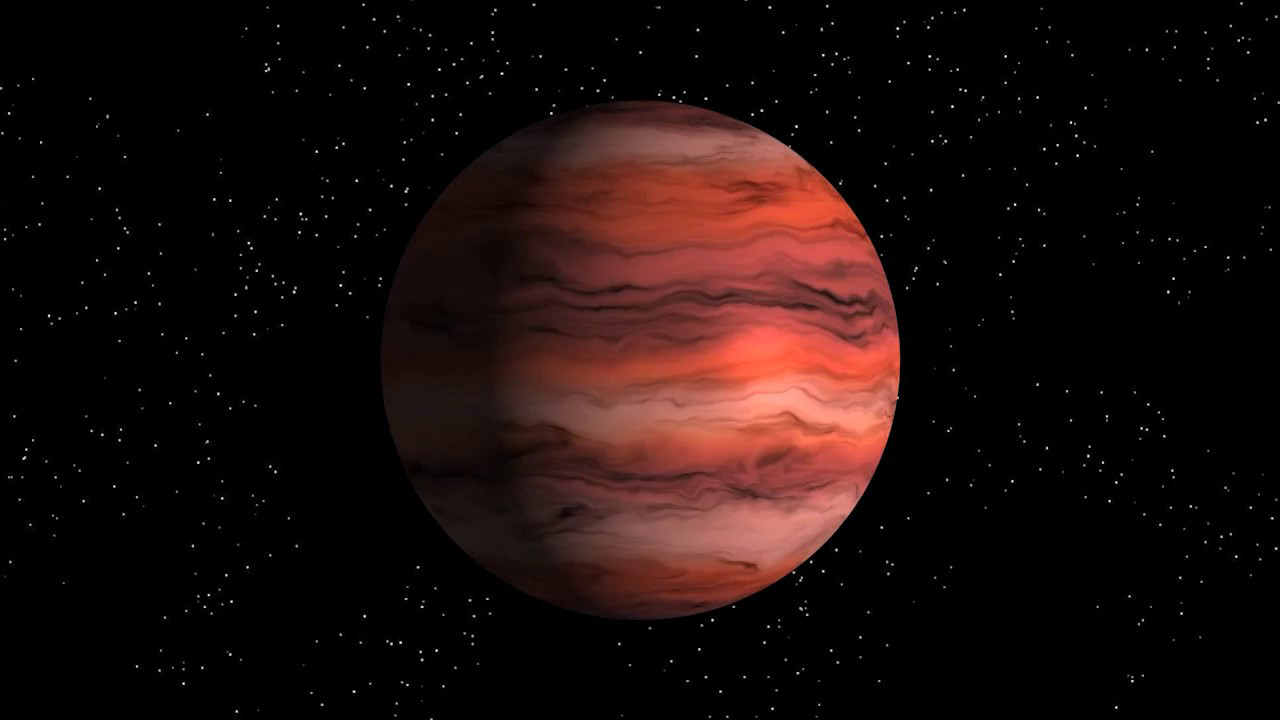 Description
Description
A large gaseous planet in the outer system, it is composed of ammonia ices as opposed to the hydrogen-helium gas giants. It appears like a reddish-orange star in the night sky.
Name and Mythology
A Llenan God, also known as Lleu, Llew and Lugh the Many Skilled. He is a druid, carpenter, poet, and mason. His animals are the raven and the lynx. He symbolizes healing, reincarnation, prophecy, and revenge. Also a Sun God as well hence the Sabbat Lughnasadh, his namesake. Lugh is the son of Cian, a Tuatha Dé Danann. In legend, his skills were without end. A white hart or stag is his symbol. He had a magic spear and otherworldly hounds.
Balor
Orbital Stats
- Orbital Relationship: 6th planet from the sun
- Semi-major Axis: 32.642 AU
- Inclination: 2.01°
- Eccentricity: 0.011
- Orbital Period: 185 years, 113 days, 3 hours
- Visibility: Telescope only
Planetary Stats
- Mass: 5.98865x1025 kg
- Radius: 22058 km
- Rotational Period: 13 hours
- Axial Tilt: 54°
- Type: Ice giant
- Moons: 5
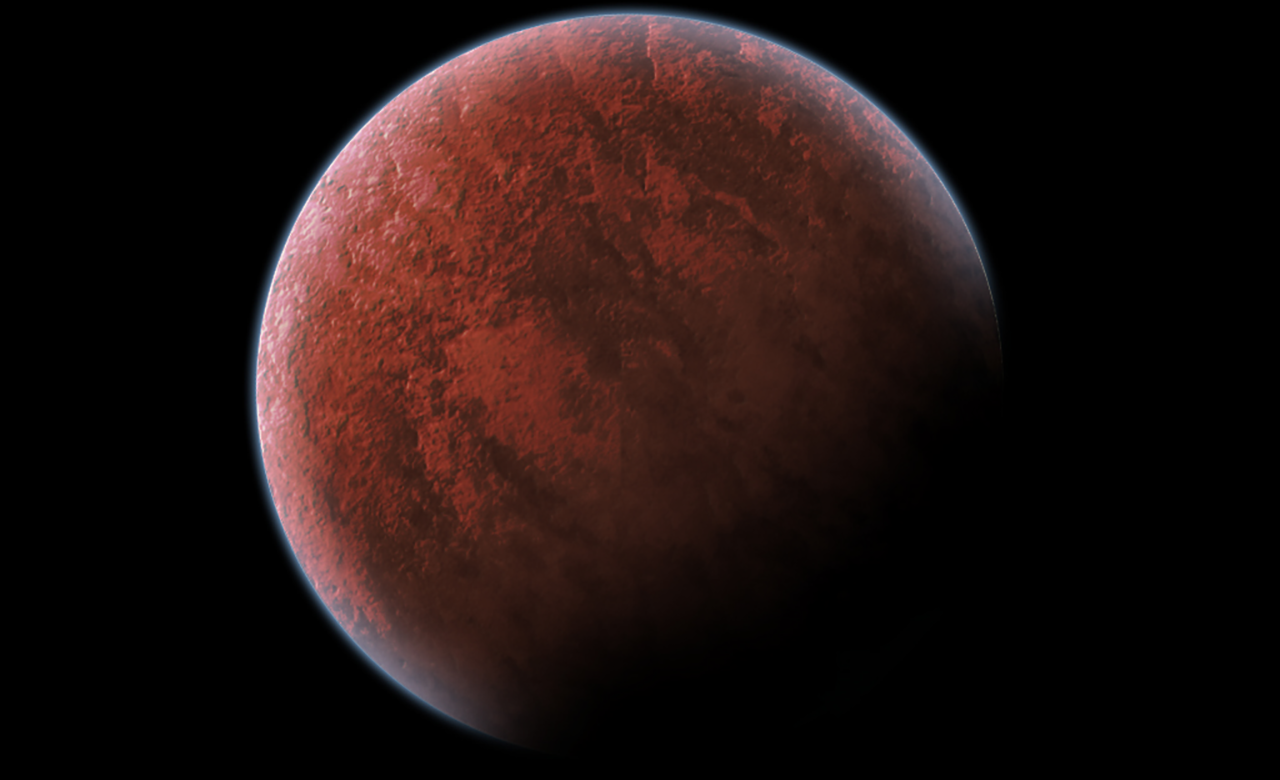 Description
Description
Very similar to the previous planet, except for a slightly deeper color.
Name and Mythology
Balor is one of many Llenan battle gods. Although he was born with two good eyes, one was ruined in an accident. The eye is so hideous that he only opens it in battle so that its venom will slay whoever is unlucky enough to catch a glimpse of it. He is also known as Balor of the Evil Eye.
Other Heavenly Bodies
Morrígu
Stellar Characteristics
- Color: Red
- Luminosity: 5.26x1031 W
- Mass: 2.9827x1031 kg
- Radius: 701450000 km
- Temperature: 3500 K
- Type: M2-1a
- Distance: 6 light-years
- Angular size from Aereth: About 7 arcseconds (size of Venus from Earth)
- Apparent magnitude: -11.5 (almost as bright as the moon from Earth!)
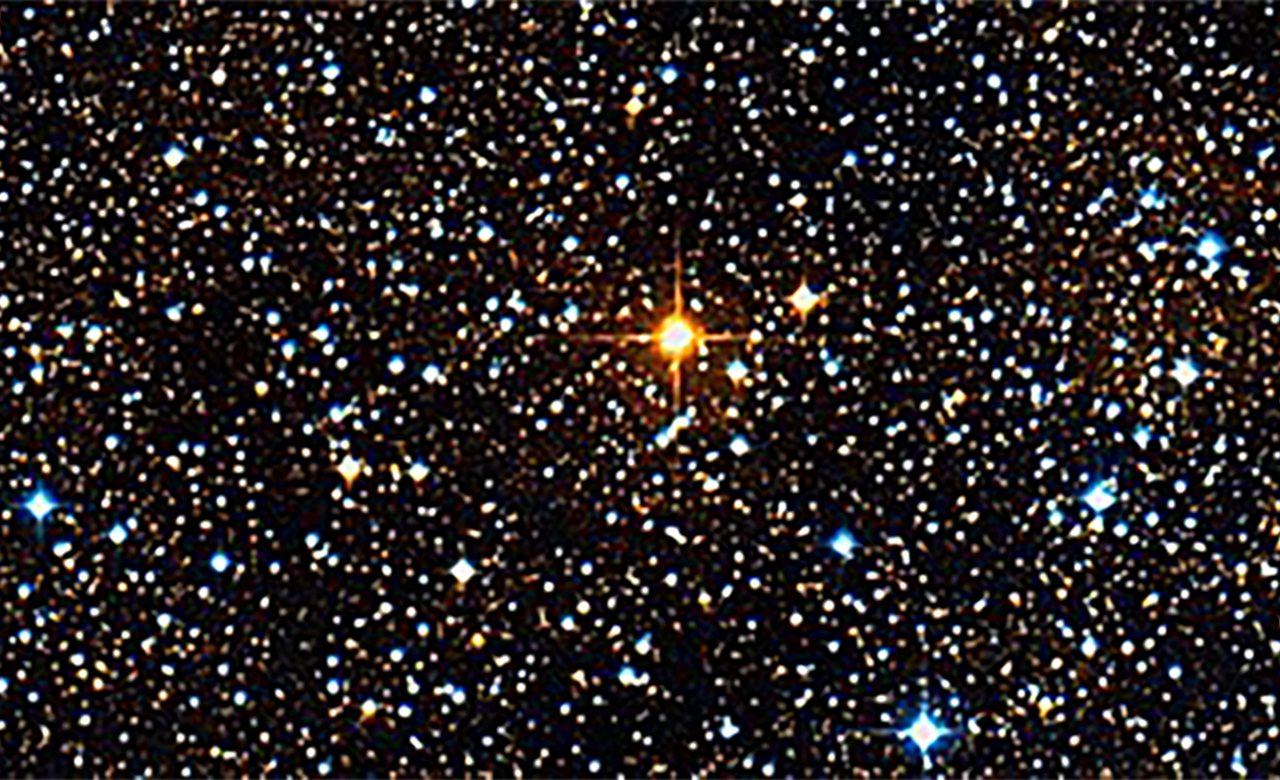 Description
Description
One of the closest stars to the Aereth system, Morrígu is a Red Supergiant star. It is in the last stages of its evolution, which it entered approximately 10,000 years ago. Prior to this, it was a bright blue star that dominated the night sky. In approximately 1M years, Morrígu will explode in a supernova which will wipe out all life in the Aereth system. Very rarely, Morrígu will pulsate to a brighter yellow to white for a short time.
Other Names
- Morrígan, Mór-Ríoghain, Washer at the Ford, Banshee
Importance
The Morrighan are named for this goddess.
Name and Mythology
The Morrígan or Mórrígan, also known as Morrígu, is a figure from Llenan mythology. It has been translated as "great queen" or "phantom queen".
The Morrígan is primarily associated with war, fate, foretelling doom, death or victory in battle. She can shapeshift to the form of a crow or raven. This association likely arose from the observation of crows and ravens following armies, sometimes for days, as if anticipating the battle, death, and carnage to come. Morrígan incites warriors to battle, can help bring about victory over their enemies, encourages warriors to do brave deeds, and strikes fear into their enemies. She is often portrayed as washing the bloodstained clothes of those fated to die. Morrígan also represents the goddess’ role as the guardian of the territory and its people.
Morrígu also embodies the spirit of the Banshee, a female phantom that is believed to herald the death of family members, especially those fated to die in battle. Many Morrighan believe that if they hear the wail and keening of the Banshee that they will be riding to their death in battle.
Although all of this would indicate that the Morrígu is a goddess to fear, that is not usually the case. She is also seen as as the one that holds open the Veil while the Four Winds convey the deceased to the Sword of Light so that they may continue their journey to the stars.
For a better understanding of Aereth's world, read Timekeeping on Aereth
Gallery: Aereth's Solar System